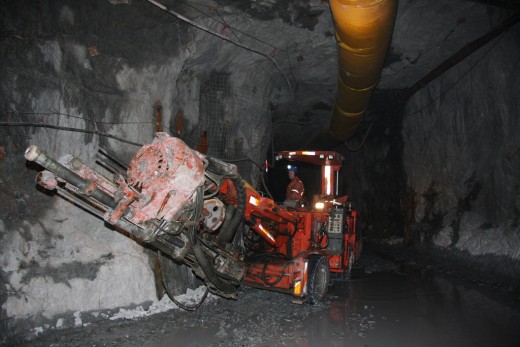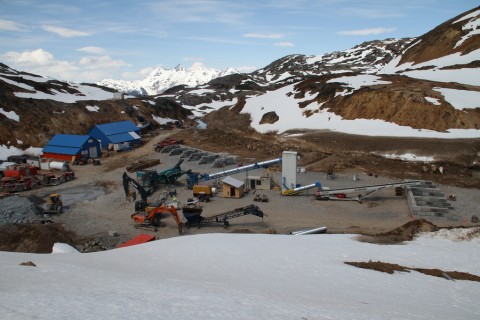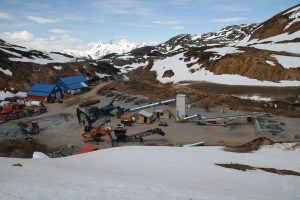
A heavy equipment operator moves a drill into position in a Brucejack Mine tunnel during exploration. (Photo courtesy Pretivm Resources)
Construction of another British Columbia mine near a river that flows into Alaska could begin within a month. But it’s a small operation sparking fewer concerns on this side of the border than some other projects.
Brucejack is a high-altitude, gold and silver prospect about 80 miles east of Wrangell. It’s within the watershed of the Unuk River, which drains into the ocean northeast of Ketchikan.
Vancouver-based Pretivm Resources is its owner and developer.
Spokeswoman Michelle Romero says heavy equipment could begin moving by the end of August.
“The construction would involve bulk earthworks first to level the area for the project infrastructure, the site facilities, as well as continuing the underground development in order to access the ore,” she says.
Brucejack is moving ahead because it just won a major environmental permit from Canada’s federal government. British Columbia’s environmental and mines agencies OK’d the project in March.
Canadian officials found the mine would cause some adverse, but not significant, environmental impacts on fisheries, wildlife and migratory birds.
It also decided project plans meet terms of agreements with the Nisga’a First Nation, whose tribal members hunt and fish in the area.
The Nisga’a were part of the environmental assessment process that led to government approval. Members will likely be among the hundreds of people who build and operate the mine.
“We will be expected to hire from the north, pursuant to all of our conditions, which includes everyone in the north, in the communities that were part of our assessment,” she says.
Construction will take two years and cost about $750 million. Additional investments and a few more permits are still needed.
Most transboundary mine concerns focus on safe storage of tailings — waste rock from the milling process.
Romero says Brucejack will not store its tailings behind an earthen dam, which critics say are unsafe.
“The tailings management plan is to put half of the tailings underground as part of the paste backfill in the spent mine workings. And then half would be deposited at the bottom of Brucejack Lake,” she says.
The high-altitude lake is frozen most of the year, has no fish and rarely drains water.
Critics in Alaska are less concerned about Brucejack than larger British Columbia projects.
Those include Kerr-Sulphurets-Mitchell, which is close to Brucejack and in the exploration phase. Another is Red Chris, which recently opened in the Stikine River watershed. Yet another is the Tulsequah Chief, which could reopen in the Taku River watershed.
“Brucejack itself is certainly not a mine that rises to the level of concern of KSM or Tulsequah Chief, given its size and method of operation,” says Chris Zimmer, Alaska Campaign Director for Rivers Without Borders, an international environmental group.
“It is close to KSM. It raises the issue of cumulative effects and how many mines are we going to see in that small area. But I think the overall concern is less about Brucejack itself but more about this overall mining binge in the transboundary (area) coming at us very fast without any safeguards,” he says.
If built, Brucejack is projected to operate for 18 years.
If more high-grade ore is discovered, Romero says it could have a longer life.







